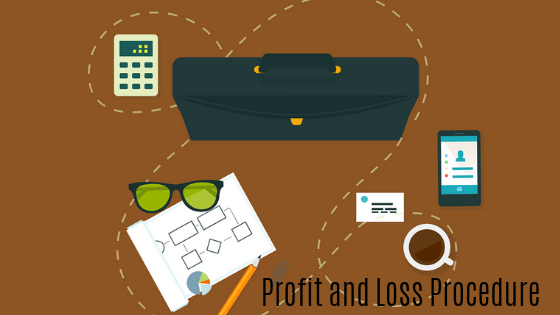Pay yourself first: Profit and Loss Procedure
Times are changing and so should our thinking when it comes to “traditional” accounting theories. Especially if you want to grow your business, but find yourself stuck in a vicious circle enable to move forward. I know first-hand both from personal experience as well a from helping clients get out of this dead-end.
We all by now have heard of the classic standard Profit and Loss Procedure below (that has set us back more than it has really helped us
SALES Less EXPENSES = PROFIT
Basically anything that remains (if any) from your services or products sold after deducting all your expenses is your Profit. It is your “wage” before tax and social security payments came in and eat 3 months’ worth of it away.
Well, the mind-set behind the system doesn’t really set yourself for success and certainly less to give yourself a wage for your time or more importantly grow!
It’s sort of like a waiting game, let’s see what happens, I’ll just pull out some money from the business to get by, hopefully at the end of the year we’ll end up with something. It’s a reactive strategy than a pro-active stance.
Ever had that feeling that despite the many years running your business and doing all it takes, you’re still sort of going round the same circle? Your business is doing OK, but for some reason you still seem far from moving to the next step? Despite your best efforts? Thank traditional accounts for that
So let’s tweak it around abit:
SALES less PROFIT = EXPENSES
Some basic but important steps:
- DECIDE A WAGE FOR YOURSELF
You might ask much of a wage you should have? Well, the amount depends on your stage in the business, BUT what is most important is that you take this amount for yourself and that you realise that it is your wage and NOT you’re Profit!
- DECIDE ON A PROFIT YOU WILL ADD ON TOP OF YOUR WAGE
We all know that a wage is what we pay someone to do a certain job or task in exchange for a fair hourly rate we think is merited for the task.
If we employ someone we also calculate that we must charge the client a higher amount then we pay the team member to factor in a profit after deducting our team member’s wage and to cover other expense.
So far so good, most get this right.
BUT…when it comes to our wage as the owners… do we actually think about adding a profit on top of our own wage? Most of the time…. NO
This I have found through many years of helping small business owners is something they sadly don’t do.
When it comes to themselves they just either take a “wage” hopefully, or just wait to see what remains at the end of the year.
You must decide on a wage for yourself that you would pay someone if that person was doing your job!.
Also more importantly.. You must factor in a profit on top of this. Otherwise when you think about it, you’re not a business owner, you just own a job. Your just your own employee, with a crazy boss (yourself J )
To matters worse, you own a job in a more stressful environment, (since you have to wear all the hats and multitask in different roles such as HR, Marketing & Sales, Customer Care, Servicing the client etc), longer hours, no guaranteed income …. and with no profit to grow your business !
If you plan to grow, you will need to delegate your “job”.
So start from now, think long term, not today but for next year! Make sure that if you had to get someone to do “your” job and paid him the same wage you paid yourself… you would be able to live of the Profits on top of your own wage!
How else can you grow your business? And make the step from self-employed with no team members or a just few…to a Big business?
The answer is on your profits, trading money for time whilst living off your profits till you secure the next few sales to balance out the new the new team member that will replace you!
3. AND ONLY THEN…WHAT’S LEFT SHOULD COVER ALL YOUR EXPENSES.
The remaining amount left after deducting Sales from your Profit (and your wage ) – should cover all remaining expenses.
Perhaps the amount can even leave a further profit!
In most cases though especially when starting out the expenses might slightly be higher and you might actually have to use profits to pay expenses… Or even your personal funds. ( or other people’s money if you have savvy accountant guiding you)
BUT the point of this is to get your mind thinking:
- Am I charging the right amount for my services? To cover my wage, profit and expenses?
- Are my services really adding Value to my clients? That they would be willing to pay higher for a better service. You get paid for the perceived value you deliver!
- Am I targeting the right clients? Or more accurately… can I attract the clients I want with the value I currently offer?
- Why are my expenses so high? What am I not seeing?
- Am I correctly budgeting my real expenses when quoting?
- Are there any extra expenses I can avoid or find cheaper alternative?
- Is there any new technology that can make the process more efficient and less time consuming?
- How much more in Sales do I need to make to take my monthly wage AND ALSO , make a profit , cover my expenses and invest in further growth?
- Am I taking in consideration my CASHFLOW? Is it enough to cover ALL expenses? ( more on how traditional P&L gets your cash flow’s situation dangerously wrong on another article)
There’s a lot to digest, but I can guarantee that those who do succeed in business and fast are using this formula, unconsciously maybe even, in a different style or manner maybe, doesn’t matter. The concept is the same.
Just don’t let the traditional accounting way or accountants keep you trapped in a vicious circle of same shit different day! You’re better than that!
You took a great risk, you followed you gut instinct , probably against the advice of friends and even family members, “ u x’se tivvinta, mignun!” that took courage and guts. Now give yourself the success your deserve with a few tweaks as we have discussed.
For more contact us here




